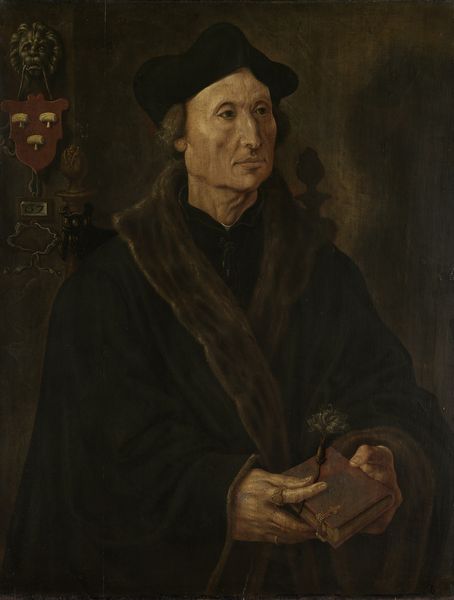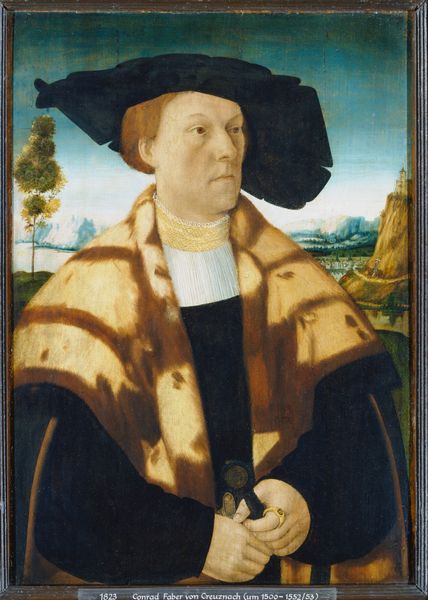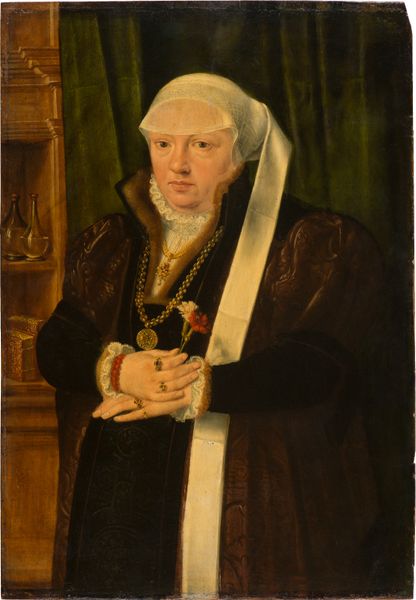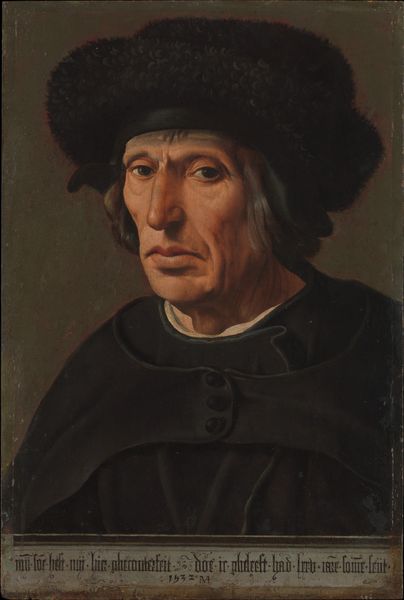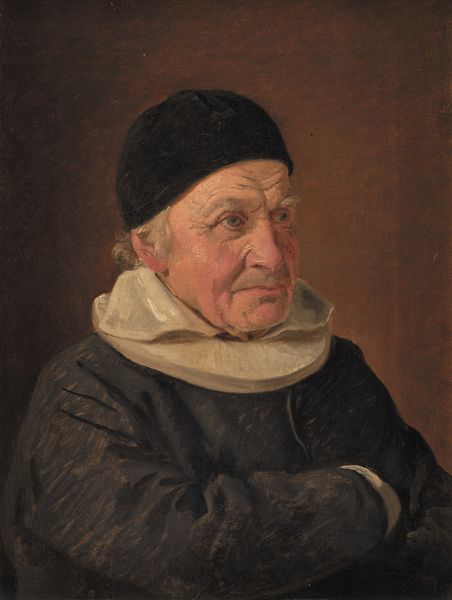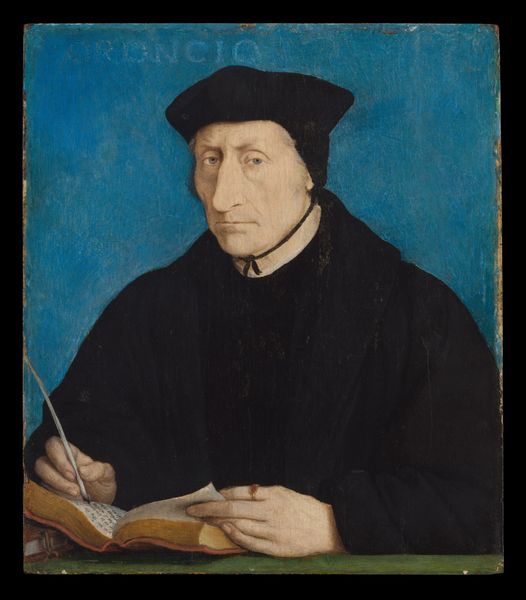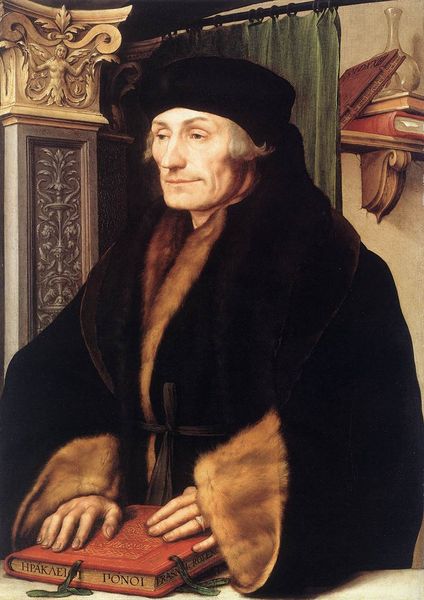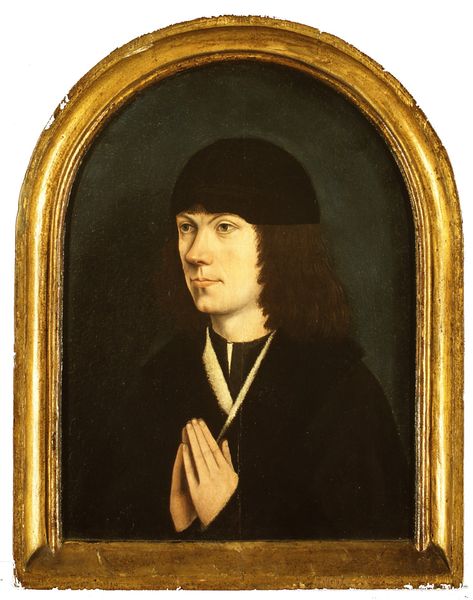
Jan (1438/41–1516), First Count of Egmond; Magdalena, Countess of Egmond (1464–1538) 1516
0:00
0:00
painting, oil-paint
#
portrait
#
painting
#
oil-paint
#
11_renaissance
#
oil painting
#
men
#
northern-renaissance
Dimensions: (.122, the Count): overall, with arched top, 16 3/4 x 10 1/4 in. (42.5 x 26 cm); original painted surface 16 1/4 x 9 5/8 in. (41.3 x 24.4 cm); (.118, the Countess) overall, with arched top and engaged frame original painted surface 19 1/4 x 12 1/2 in. (48.9 x 31.8 cm); painted surface 16 1/2 x 9 1/4 in. (41.9 x 24.8 cm)
Copyright: Public Domain
These portraits of Jan, the First Count of Egmond, and Magdalena, his Countess, were crafted by an anonymous hand in the late 15th or early 16th century. Look closely at the Count's chain. It’s not merely ornamentation; it's a potent symbol of power and lineage, resonating with the weight of authority. Consider how chains have appeared throughout history, from the chains of office worn by dignitaries to the allegorical chains of love or servitude depicted in Renaissance art. Chains serve as metaphors for connection, obligation, and status. Think of the medieval tradition of courtly love, where a lady might present her knight with a symbolic chain, embodying his servitude to her. The psychological aspect of the chain should not be overlooked. It evokes feelings of both security and constraint, binding the wearer to a societal role while simultaneously restricting their freedom. It’s a powerful force engaging viewers on a deep, subconscious level, embodying intense emotional states. Thus, the chain has resurfaced, evolved, and taken on new meanings across different historical contexts.
Comments
No comments
Be the first to comment and join the conversation on the ultimate creative platform.



